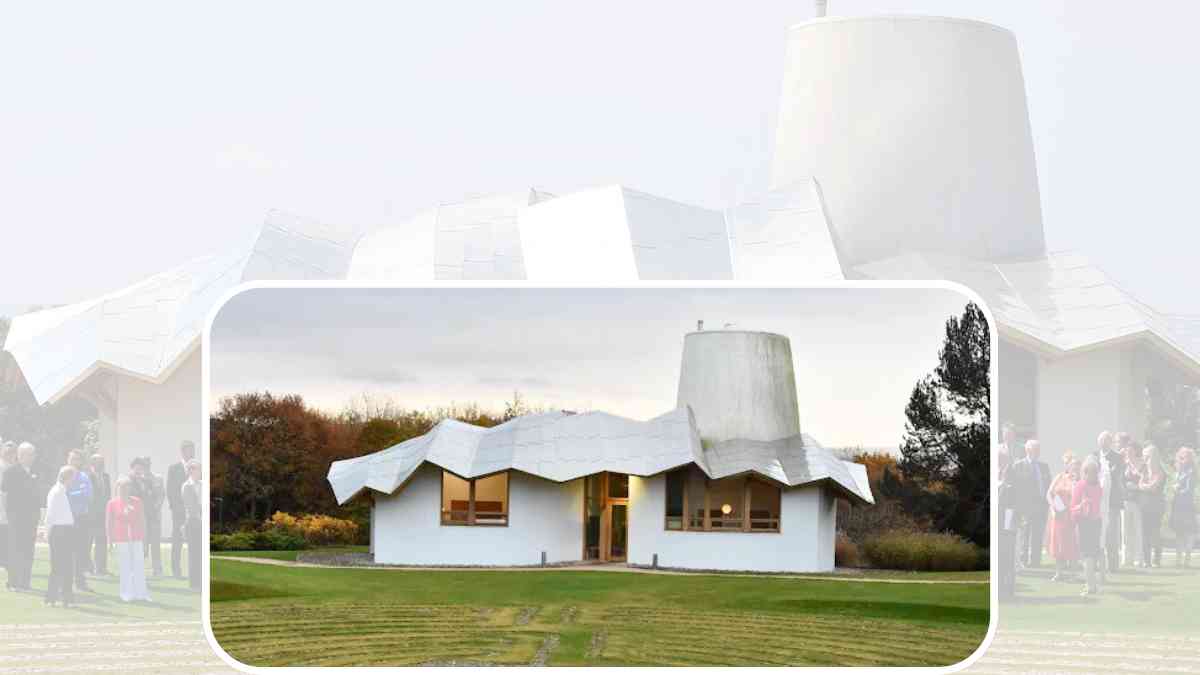Maggie’s Dundee: A Beacon of Hope and Architectural Brilliance in Cancer Care

Maggie’s Dundee stands as one of the most remarkable examples of how architectural brilliance and heartfelt support services can unite to create a sanctuary for individuals facing cancer. Nestled within the grounds of Ninewells Hospital in Dundee, Scotland, this unique centre was designed to provide comfort, information, and solace for people affected by cancer — patients, families, and carers alike.
What makes Maggie’s Dundee truly special is its dual role: it is both a physical space of beauty and inspiration and a deeply human place where people find strength during one of the most challenging periods of their lives. This article explores the story, design, services, and legacy of Maggie’s Dundee, underlining why it continues to be a symbol of hope and a gold standard in supportive cancer care.
The Birth of Maggie’s Concept
Maggie’s Centres are named after Maggie Keswick Jencks, a writer, designer, and cancer patient whose personal experience reshaped the way supportive care is delivered in oncology. Diagnosed with terminal cancer in the early 1990s, Maggie and her husband, architect Charles Jencks, envisioned a place away from the stark, clinical hospital corridors — a home-like environment where emotional wellbeing could be nurtured.
The first centre opened in Edinburgh in 1996, and soon after, plans began for more locations across the UK. Each centre has its own unique architectural identity, designed by world-renowned architects to be uplifting and inspiring.
Maggie’s Dundee: A Groundbreaking First
Opened in September 2003, Maggie’s Dundee was the first purpose-built centre in the organisation’s growing network. It represented a significant evolution in the Maggie’s model. Until that point, Maggie’s Centres had been housed in converted buildings. Dundee marked the beginning of bespoke architectural projects specifically designed to deliver Maggie’s vision.
The centre at Dundee was designed by Frank Gehry, one of the world’s most acclaimed architects, best known for his expressive, sculptural forms. Maggie’s Dundee was his first building in the United Kingdom. The result was a bold yet warm structure that set new standards for therapeutic architecture.
Architectural Design: A Place Like No Other
Gehry’s design for Maggie’s Dundee is unlike any typical hospital facility. The building resembles a series of interconnected cottages under a folded, sculptural stainless steel roof. This dramatic design reflects Gehry’s signature style while remaining grounded in Maggie’s vision of warmth and intimacy.
The interior of the centre is light-filled and calming. It features wooden floors, large windows offering views of nature, and open spaces that encourage conversation and community. It’s a place designed to make people feel at ease, not intimidated.
At the heart of the design is a library tower — a space for reflection and knowledge. Just as Maggie Keswick Jencks believed information could empower patients, the tower provides a quiet haven where visitors can learn more about cancer, treatment options, and self-care.
The Healing Power of Landscape
Surrounding the centre is a garden designed by Arabella Lennox-Boyd, a prominent landscape designer. The garden isn’t just an aesthetic addition — it plays a vital role in the healing environment.
A key feature is a labyrinth based on the famous pattern at Chartres Cathedral in France. Unlike a maze, a labyrinth has a single, winding path that leads to the centre. It symbolises a journey through uncertainty — much like the cancer experience — and provides a meditative experience for visitors.
Other garden elements include gentle slopes, terraces, and a variety of plants chosen for their sensory appeal. Together, they offer a tranquil space for quiet contemplation or informal chats. Even from inside the building, views of the garden invite calmness and connection to the natural world.
Support Services: More Than Just a Building
At Maggie’s Dundee, the architecture is merely the vessel. The true heart of the centre lies in the people who work there and the services they provide. All support is free of charge and available to anyone affected by cancer — not just patients, but also families, friends, and carers.
Qualified professionals, including cancer support specialists, psychologists, and benefits advisors, are on hand to offer expert guidance. Whether it’s understanding a diagnosis, coping with treatment side effects, or dealing with financial worries, support is personalised and compassionate.
One-to-one sessions are available, but much of the support is built around group activities. These include relaxation classes, art therapy, writing workshops, nutrition advice, and social groups that allow people to share experiences and form meaningful connections.
Creating Community in the Face of Crisis
Cancer often brings feelings of isolation. Maggie’s Dundee actively works against this by fostering a sense of community. The centre is designed like a home, with a welcoming kitchen at its heart. Visitors are encouraged to make a cup of tea, join others at the table, and feel part of a shared experience.
The staff and volunteers work tirelessly to ensure that everyone who walks through the door is greeted with warmth and respect. Many visitors speak of the profound impact this community feeling has on their emotional resilience.
Moreover, Maggie’s Dundee hosts events and awareness campaigns throughout the year. These not only raise funds for the centre but also engage the wider public, strengthening the community around those living with cancer.
A Model of Excellence
Maggie’s Dundee has received numerous accolades over the years. Its architectural design has been widely praised, earning the Royal Fine Art Commission for Scotland’s “Building of the Year” award in 2004. It was also nominated for the RIAS Andrew Doolan Best Building in Scotland Award.
But perhaps the greatest recognition comes from the thousands of individuals and families who have found solace within its walls. Their stories of support, hope, and personal growth are a testament to the power of thoughtful design coupled with human empathy.
Accessibility and Practical Information
Situated within the Ninewells Hospital complex, Maggie’s Dundee is easy to access for patients and visitors. There is parking available nearby, as well as public transport links that connect the hospital to the rest of the city.
No referral or appointment is needed. Anyone can drop in from Monday to Friday during opening hours. The relaxed, open-door approach is a cornerstone of Maggie’s philosophy — making sure support is never out of reach.
Inside the centre, everything is designed with accessibility in mind. Wide doorways, step-free access, and comfortable seating ensure that people of all abilities can feel welcome and at ease.
Frank Gehry’s Personal Connection
Frank Gehry was not just an architect working to a brief — he was personally moved by the mission of Maggie’s. His friendship with Charles Jencks and admiration for Maggie’s vision led him to offer his services for free. He saw the project as an opportunity to use his skills for a cause that transcended traditional architecture.
Gehry has often spoken about how architecture can influence emotion and behaviour. Maggie’s Dundee stands as a living example of that belief: a place where space helps to heal, and where design is not about grandeur, but about care.
The Enduring Legacy of Maggie’s Dundee
Over two decades since it first opened its doors, Maggie’s Dundee remains a shining example of how healthcare environments can be reimagined. It has inspired other Maggie’s Centres across the UK and beyond, each designed by a different architect but grounded in the same core principles.
Its continued success is a reminder that healing doesn’t come solely from medicine. Environment, empathy, and empowerment all play a vital role in supporting individuals on their journey through cancer.
Maggie’s Dundee proves that when architecture meets compassion, the result can be transformative. Not only has it changed lives — it has also changed the conversation about what supportive care should look like.
Conclusion: A Sanctuary of Strength
Maggie’s Dundee is more than just a building. It is a sanctuary of strength, a masterpiece of architectural empathy, and a testament to the enduring power of human connection. Through thoughtful design, compassionate support, and a deep understanding of what people truly need in moments of vulnerability, Maggie’s Dundee has become a beacon of hope in the landscape of cancer care.
As cancer continues to touch the lives of countless individuals and families, centres like Maggie’s Dundee remind us of the profound difference that community, design, and kindness can make.



